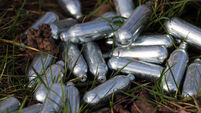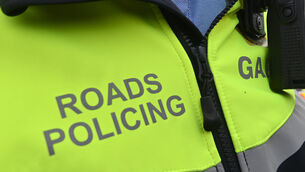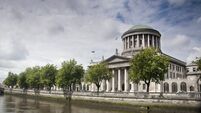Anatomy of murder
IT was the actions of two errant Irishmen, known as the Body Snatchers, who shaped the 172-year-old anatomy legislation we still have today.
William Burke, from the former barony of Orrery in Co Cork, had come to Edinburgh in disgrace after deserting his Irish wife and children.
He moved into Logs Lodging House in the city in 1827, where he met another Irish tenant, William Hare from Derry.
This set off a chain of events that resulted in at least 16 murders.
At the time, the knowledge of anatomy was developing rapidly but anatomists were only legally allowed to dissect the corpses of executed criminals.
Burke and Hare entered this netherworld after another lodging house tenant died in his bed, owing them a debt of four pounds.
The pair secretly placed a weight in his coffin and brought the corpse to Dr Robert Knox of the Edinburgh Medical School. Burke and Hare were paid £7 10s (the equivalent of €550 today) and no questions were asked.
Raiding graveyards for bodies was a popular practice at the time, but it had become more difficult with the introduction of impregnable cast-iron coffins and night watchmen.
Burke and Hare decided on a different strategy to obtain fresh corpses. They began luring beggars and prostitutes to their lodging house, plying them with whiskey and then suffocating them.
Burke became so skilled at presenting a clean corpse to Dr Knox's department that for the best part of 100 years, the verb 'to burke' was used, meaning 'to kill without marks'. But the constant supply of new bodies aroused the suspicions of Dr Knox's students.
They recognised one of the bodies as that of a mentally retarded teenager known around the college as 'Daft Jamie' and realised his death had not been officially recorded. When a tenant in the lodging house discovered a naked corpse in a bedroom, the game was up. The police succeeded in getting Hare to testify against Burke, in return for his freedom.
Burke was hanged before a crowd of 25,000 people in 1829 and his body was donated to medical science. It was dissected in a public lecture, which drew a full house. Burke's skeleton is still one of the prime exhibits in the University of Edinburgh's Anatomy Museum. In the wake of the case, a popular children's song included the lines "Burke's the butcher, Hare's the thief, Knox, the man who buys the beef."
The public outrage at the disclosure of the murders and the lack of any punishment for Dr Knox who pleaded ignorance of the source of the bodies forced the British parliament into action. It passed the 1832 Anatomy Act, which allowed bodies of those maintained by the state the very poor who lived in workhouses to become the property of the anatomists after death. The Irish medical schools today are a far cry from the horrors of Burke and Hare. All bodies come from donors who have signed consent forms and a full burial or cremation service is provided after a three-year period.
But the 1832 Anatomy Act still applies. An Inspector of Anatomy supervises the five Irish medical colleges to ensure donors' bodies are handled and disposed of correctly. The position was held by Dr Rosemary Boothman, an assistant chief medical officer at the Department of Health, but has not been filled since her retirement last year.
There have been unusual reports recently that more people are donating their bodies to science to avoid rising funerals costs (which are paid by the medical colleges). However, none of the medical colleges contacted have experienced this.
"I don't think any of our donors say to themselves: 'this would be a cheap way to go'. It is an altruistic decision," said Philomena McAteer, chief technician in Trinity College's anatomy department.
But the ghoulish interest in anatomy, which was first aroused by the Burke and Hare case, remains intense. When Channel Four broadcast a live autopsy by Professor Gunther von Hagens two years ago, it attracted an audience of 1.4 million.












